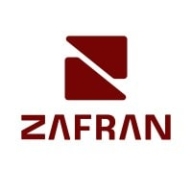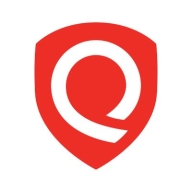


Microsoft Defender Vulnerability Management and Qualys CyberSecurity Asset Management are leading competitors in the cybersecurity asset management category. In terms of integration and asset discovery, Qualys offers more advanced features, making it potentially more suitable for organizations needing detailed asset oversight.
Features: Microsoft Defender Vulnerability Management includes compliance, vulnerability assessments, and integration with Microsoft products, ideal for Microsoft ecosystem users. It integrates smoothly with tools like Sentinel, enhancing security operations. Qualys CyberSecurity Asset Management excels in asset discovery and management, offering comprehensive visibility into hardware and software assets with robust categorization for managing authorized and unauthorized applications.
Room for Improvement: Microsoft Defender users face challenges with report customization, integration with non-Windows platforms, false positives, and slow portal refresh rates. Qualys users point to UI complexity, scanning configuration flexibility, needed improvements in tagging, and scan frequency, along with enhanced role-based access controls and reporting features.
Ease of Deployment and Customer Service: Microsoft Defender is available across Public, Hybrid, and Private Cloud environments. Customer support receives mixed reviews with some users experiencing delays. Qualys CyberSecurity Asset Management also supports similar deployment options with favorable reviews for cloud adaptability and support. Users find its integration with existing systems straightforward but seek better service responsiveness.
Pricing and ROI: Microsoft Defender is priced medium with a complex licensing structure which can be confusing, yet considered economical when part of broader Microsoft packages. Qualys is potentially costly as an add-on but provides a comprehensive package valuable for larger organizations. Its pricing is seen as fair, though costs may be prohibitive for smaller companies without adjusted packages for smaller-scale needs.
| Product | Market Share (%) |
|---|---|
| Qualys CyberSecurity Asset Management | 1.3% |
| Microsoft Defender Vulnerability Management | 2.8% |
| Zafran Security | 1.1% |
| Other | 94.8% |



| Company Size | Count |
|---|---|
| Small Business | 8 |
| Midsize Enterprise | 2 |
| Large Enterprise | 5 |
| Company Size | Count |
|---|---|
| Small Business | 6 |
| Midsize Enterprise | 2 |
| Large Enterprise | 16 |
Zafran Security integrates with existing security tools to identify and mitigate vulnerabilities effectively, proving that most critical vulnerabilities are not exploitable, optimizing threat management.
Zafran Security introduces an innovative operating model for managing security threats and vulnerabilities. By leveraging the threat exposure management platform, it pinpoints and prioritizes exploitable vulnerabilities, reducing risk through immediate remediation. This platform enhances your hybrid cloud security by normalizing vulnerability signals and integrating specific IT context data, such as CVE runtime presence and internet asset reachability, into its analysis. No longer reliant on patch windows, Zafran Security allows you to manage risks actively.
What are the key features of Zafran Security?
What benefits can users expect from Zafran Security?
In industries where security is paramount, such as finance and healthcare, Zafran Security provides invaluable protection by ensuring that only exploitable vulnerabilities are addressed. It allows entities to maintain robust security measures while allocating resources efficiently, fitting seamlessly into existing security strategies.
Microsoft Defender Vulnerability Management enables organizations to identify vulnerabilities, manage patches, and fortify threat detection. It offers endpoint assessments, cloud incident management, and dynamic security through Microsoft's Security Scorecard integration.
Organizations leverage Microsoft Defender Vulnerability Management for advanced threat detection and response. It provides robust tools for vulnerability assessment and cloud incident management, integrated with Microsoft's Security Scorecard to enhance dynamic security profiling. Key features include automatic patch deployment, security configuration management, and seamless integration with Microsoft platforms, benefiting both on-prem and cloud environments. Organizations can track vulnerabilities with severity-based reports, helping manage outdated software and minimizing threat exposure.
What are the key features of Microsoft Defender Vulnerability Management?In healthcare, Microsoft Defender Vulnerability Management helps manage compliance with health regulations, while in finance, it aids in securing sensitive data from cyber threats. Manufacturing sectors benefit from its patch management, keeping operational technology systems less vulnerable to disruptions.
Qualys CyberSecurity Asset Management provides advanced real-time asset visibility, dynamic tagging, and External Attack Surface Management. It streamlines asset discovery and management using cloud agents and IP-based scanning, enhancing risk management and software lifecycle tracking.
Qualys CyberSecurity Asset Management offers a comprehensive solution for managing asset inventories and tracking software lifecycle states. It facilitates network visibility and supports zero-day vulnerability solutions, enhancing security posture through efficient monitoring. Users benefit from its cloud-based interface, which provides in-depth asset configurations and insights. Key features include automated vulnerability scanning and unauthorized software management, reducing manual efforts. The platform also emphasizes the importance of timely remediation and ongoing risk mitigation across multiple environments. Despite its strengths, users note the need for enhanced integration with additional CMDBs beyond ServiceNow, as well as cost efficiency improvements. Requests also include better report customization, more scan control, and a simplified UI.
What are the key features of Qualys CyberSecurity Asset Management?In industries like finance, healthcare, and manufacturing, Qualys CyberSecurity Asset Management enhances asset control by offering visibility into hardware and software configurations. It aids in maintaining security compliance and identifying unauthorized software, crucial for sectors with strict regulatory requirements.
We monitor all Vulnerability Management reviews to prevent fraudulent reviews and keep review quality high. We do not post reviews by company employees or direct competitors. We validate each review for authenticity via cross-reference with LinkedIn, and personal follow-up with the reviewer when necessary.